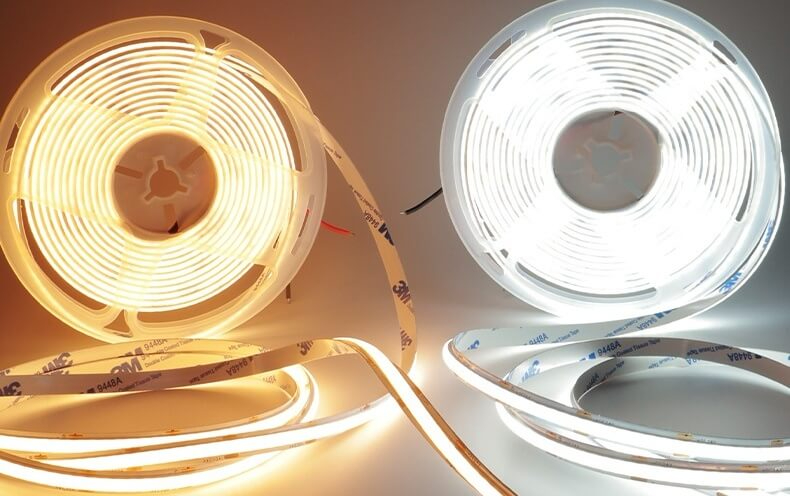High Quality OEM/ODM LED Strip Manufacturer
High Quality OEM/ODM LED Strip Manufacturer
July 23, 2024 217
When selecting LED strips, many people focus on specifications such as wattage (W), lumens (lm), and color temperature (K), expecting different brands or models with the same specifications to offer identical brightness. However, in reality, even with identical specifications, LED strips can exhibit variations in brightness. This article explores the key reasons behind these differences in brightness.

LED chips are the core components of LED strips, and their quality directly affects the brightness and performance of the strip. LED chips from different manufacturers can have varying luminous efficacy, which is the efficiency of converting electrical power into light. High-quality LED chips typically offer higher luminous efficacy, providing more light output at the same power level. Conversely, lower-quality chips may produce less brightness under the same conditions and may also have a shorter lifespan.
The thermal management design of an LED strip is crucial for maintaining brightness and extending the lifespan of the LEDs. As LED chips operate, they generate heat. Without effective heat dissipation, the chips can overheat, reducing their luminous efficacy and brightness. A good thermal design helps quickly dissipate heat, keeping the LED chips within an optimal operating temperature range. Therefore, even with the same specifications, differences in thermal design can lead to variations in brightness.
The way an LED strip is driven by current also significantly impacts brightness. Even the same LED chips can produce different light outputs under different current levels. Some LED strips are designed to handle higher currents, which can increase brightness. However, excessive current can lead to overheating and reduce the lifespan of the LEDs. Thus, differences in how the current is managed can result in varying brightness levels even with identical specifications.
The optical design of LED strips, such as lenses and reflectors, affects the distribution and direction of light. Good optical design can optimize light direction and diffusion, enhancing the efficiency of light output. This is why some LED strips may appear brighter or have a more even light distribution, even if they use the same LED chips and current. The optical components play a crucial role in the overall brightness and quality of the light.
The manufacturing process and choice of materials also contribute to the brightness of LED strips. For example, the transparency and heat resistance of the encapsulation materials, the precision of the soldering process, and the quality of the PCB can all impact the efficiency of light output and the stability of the strip. Differences in these areas can lead to variations in the final product's brightness, even if the basic specifications are the same.

In conclusion, LED strips with identical specifications can still exhibit variations in brightness. These differences are mainly due to factors such as the quality of LED chips, thermal management design, current driving methods, optical design, and manufacturing processes. When choosing LED strips, it’s essential to consider not only the basic specifications but also the overall quality and design of the product to find the best match for your needs.
If you need assistance from professionals, feel free to contact us. We are here to provide you with expert help and support for all your needs. Don't hesitate to reach out to our team for personalized assistance and solutions. We look forward to serving you.
Our sales will reply to you within 2 hours.
